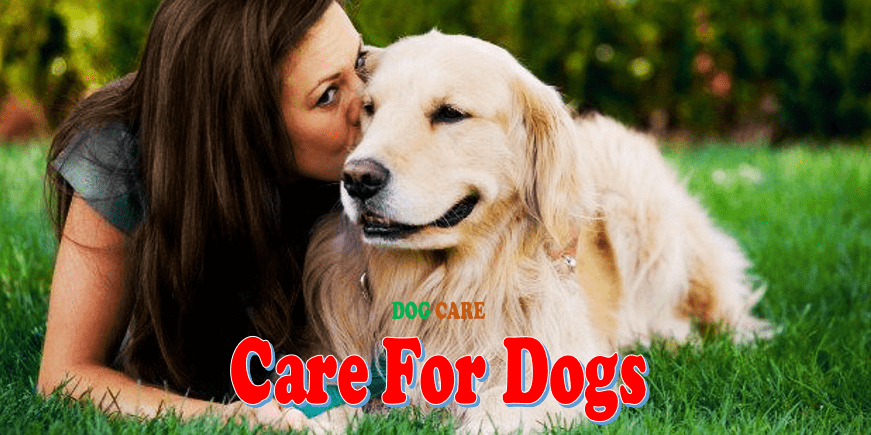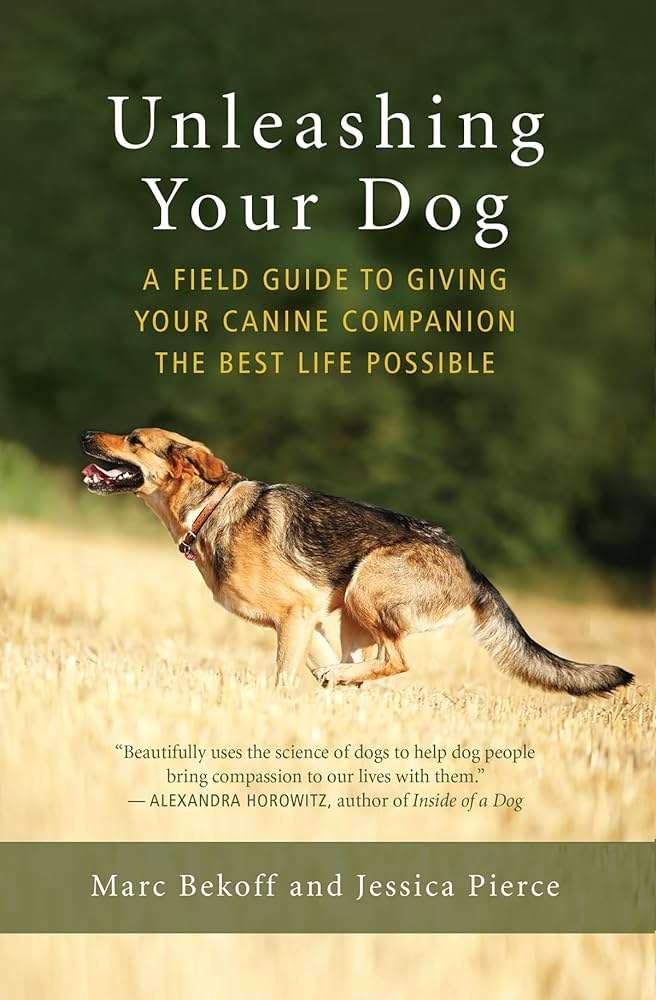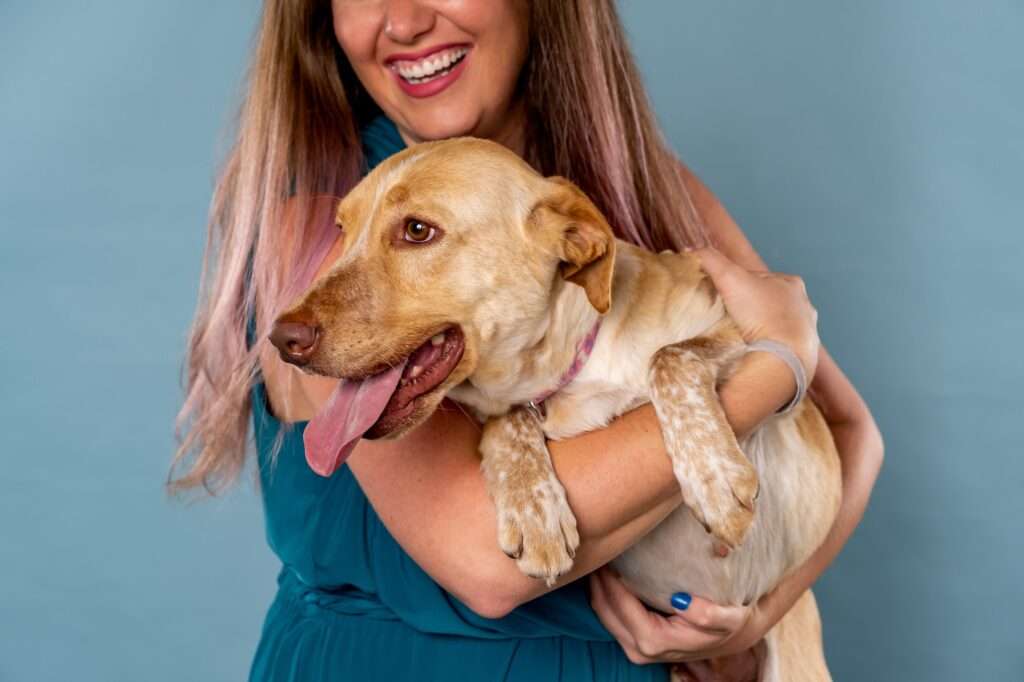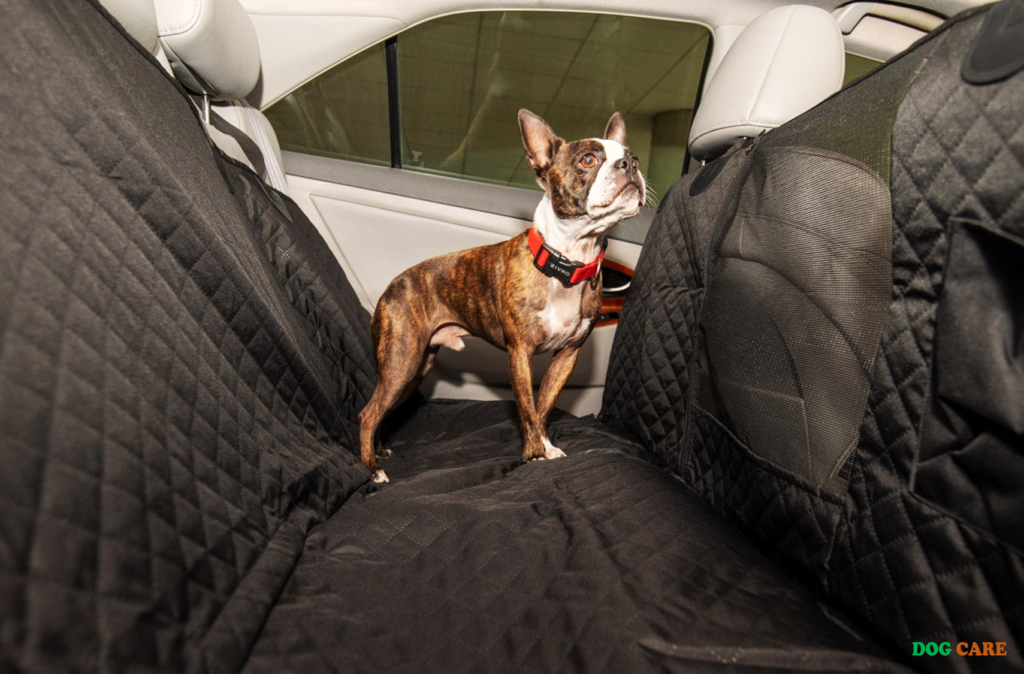Care for Dogs – Provide proper nutrition and regular vet check-ups for dogs to ensure their health and well-being. Taking care of dogs involves a combination of various factors, including a balanced diet, exercise, grooming, and regular vet visits.
By providing proper nutrition that meets their specific dietary needs, dogs can maintain a healthy weight and have sufficient energy levels. Regular vet check-ups are essential to monitor their overall health, detect any underlying conditions early, and administer necessary vaccinations.
Additionally, dogs should receive regular exercise to stay physically fit and mentally stimulated. Grooming, such as brushing their coat, trimming nails, and cleaning their ears, helps maintain their hygiene and prevents skin infections. By following these practices, dog owners can ensure their furry companions lead happy and healthy lives.

Understanding Your Dog’s Needs
Understanding your dog’s needs is essential for their overall well-being and happiness. Dogs are not just pets; they are part of our family. They rely on us to meet their physical, mental, and social needs. In this article, we will delve into these needs in more detail, and explore how you can ensure your dog is getting everything they need to thrive.
Physical Exercise
Dogs need regular physical exercise to maintain a healthy weight, prevent obesity, and keep their muscles and joints in good condition. Daily walks or runs in the park are great ways to provide them with the exercise they need. Additionally, playing games like fetch or tug-of-war can help engage their muscles and give them mental stimulation at the same time. Aim for at least 30 minutes to an hour of exercise each day, depending on your dog’s age and breed.
Mental Stimulation
Providing your dog with mental stimulation is as important as physical exercise. Dogs are intelligent animals that thrive on mental challenges. Incorporate activities that engage their minds, such as puzzle toys, treat-dispensing toys, or obedience training sessions. These activities help to keep them mentally sharp and prevent boredom, which can lead to destructive behavior. Spend at least 15 minutes each day on mental stimulation activities with your furry friend.
Social Interaction
Just like humans, dogs are social creatures. They crave companionship and interaction with both humans and other dogs. Regular socialization helps prevent behavioral issues and promotes a well-rounded personality. Take your dog to the dog park or arrange playdates with other friendly dogs. Encourage positive interactions with people by introducing your dog to new faces regularly. This will help them feel more comfortable in different social settings and develop better social skills.
To meet your dog’s needs, ensure you balance physical exercise, mental stimulation, and social interaction. By doing so, you will help your dog live a healthier, happier, and more fulfilled life.
Feeding And Nutrition
Proper feeding and nutrition are crucial for the overall health and well-being of your furry friend. Providing the right diet is essential to keep your dog energetic, maintain a healthy weight, promote a shiny coat, and support their immune system. In this section, we will explore the importance of choosing the right food, meal planning, and special dietary considerations for your beloved canine companion.
Choosing The Right Food
When it comes to choosing the right food for your dog, it’s important to consider their age, size, breed, and any specific dietary requirements they might have. Opt for high-quality dog food that is nutritionally balanced and formulated to meet their specific needs. Look for a product that lists a quality source of protein, such as chicken or lamb, as the main ingredient. Avoid foods that contain artificial flavors, colors, or preservatives, as they can be harmful to your pup’s health.
Additionally, take note of your dog’s energy level and activity level. Active dogs may require a higher calorie intake, while less active dogs may need a lower-calorie diet to maintain a healthy weight. Consult with your veterinarian to determine the appropriate calorie intake for your dog based on their individual needs.
Meal Planning
Creating a meal plan for your dog can help ensure they receive a balanced diet and maintain a healthy weight. Divide their daily food intake into two or three smaller meals to prevent overeating and aid digestion. Monitor their weight regularly and adjust their portion sizes accordingly to keep them within a healthy range.
Include a variety of ingredients in their meals to provide necessary nutrients and add some excitement to their dining experience. Incorporate lean proteins, such as chicken or turkey, as well as whole grains, fruits, and vegetables. However, it’s important to avoid foods that are toxic to dogs, such as chocolate, onions, garlic, grapes, and raisins.
Special Dietary Considerations
Just like humans, dogs may have special dietary considerations. Some dogs may have allergies or sensitivities to certain ingredients, requiring a specialized diet. Common food allergies in dogs include beef, dairy products, wheat, and soy. If your dog experiences symptoms like itching, vomiting, or diarrhea after consuming certain foods, consult your veterinarian for an allergy test and guidance on an appropriate diet.
In addition, certain health conditions may call for specific dietary modifications. For example, dogs with kidney disease may require a low-protein diet, while those with food sensitivities may benefit from grain-free options. Always consult with your veterinarian to determine the best diet plan for your dog if they have any specific dietary needs or health concerns.
Grooming And Hygiene
Proper grooming and hygiene are essential for the overall health and well-being of your furry friend. Regular grooming not only keeps your dog looking their best but also helps to prevent skin irritations, infections, and other health issues. In this section, we will discuss three important aspects of dog grooming and hygiene: bathing and brushing, nail trimming, and dental care. Let’s dive in!
Bathing And Brushing
Giving your dog regular baths is an important part of maintaining their hygiene. It helps to remove dirt, dead skin cells, and odors while keeping their coat healthy and shiny. If your dog has a short coat, you can bathe them every 3-4 months, but for dogs with long or thick coats, more frequent baths may be necessary.
To ensure a thorough clean, use a dog-specific shampoo and warm water. Start by wetting your dog’s coat and then lather the shampoo from head to tail, avoiding the eyes and ears. Rinse your dog well to remove all traces of shampoo, as residue can cause skin irritation. Finally, towel dry your dog or use a blow dryer on a low, warm setting to prevent them from getting chilled.
Apart from bathing, regular brushing is important for all dogs, regardless of their coat length. Brushing helps to remove loose hair, prevent matting, and distribute natural oils throughout the coat. It also allows you to keep an eye out for any skin issues, ticks, or fleas that may require attention.
Nail Trimming
Keeping your dog’s nails trimmed is vital for their comfort and overall wellbeing. Overgrown nails can cause pain and discomfort, as they can curl into the paw pads or even break, leading to infections. As a general guideline, trim your dog’s nails every 4-6 weeks, but this may vary depending on their activity levels.
If your dog has clear or light-colored nails, you can easily identify the quick, which is the blood vessel inside the nail. Cut the nail just before the quick to avoid causing bleeding. For dogs with dark or black nails, it’s best to trim small sections at a time and observe for a grayish-white circle, indicating proximity to the quick.
Remember to use specially designed dog nail clippers or a grinder, as regular human clippers can cause injury. If you’re unsure about trimming your dog’s nails, consult a professional groomer or your veterinarian for guidance.
Dental Care
Just like humans, dogs also need proper dental care to maintain healthy teeth and gums. Poor dental hygiene can lead to tooth decay, gum disease, and even systemic health issues. It’s recommended to brush your dog’s teeth regularly, ideally every day, to remove plaque and tartar buildup.
Start by using a dog-specific toothbrush and toothpaste, as human toothpaste can be harmful if swallowed. Gently lift your dog’s lips and brush their teeth using circular motions, focusing on the gum line. Gradually introduce toothbrushing to your dog’s routine, making it a positive experience with rewards and praise.
In addition to toothbrushing, there are dental treats, chew toys, and water additives available that can help promote good oral health. Schedule regular dental check-ups with your veterinarian to monitor your dog’s dental health and address any potential issues.
Healthcare And Vet Visits
Proper healthcare is essential for dogs. Regular vet visits ensure their well-being and help detect any potential health issues early on, providing necessary care and treatment.
Vaccinations And Preventative Care
Parasite Control
Health Monitoring
In order to ensure the well-being and longevity of your furry friend, it is crucial to prioritize their healthcare and make regular visits to the veterinarian. Veterinary care not only helps prevent diseases but also addresses any health issues early on. Here are some essential aspects of healthcare and vet visits that every dog owner should be aware of.
Vaccinations And Preventative Care
Keeping your dog up to date on vaccinations is vital for their overall health. Vaccines protect them from various contagious and potentially life-threatening diseases such as rabies, distemper, parvovirus, and hepatitis. It is crucial to follow the vaccination schedule recommended by your veterinarian to ensure the maximum effectiveness.
Furthermore, preventative care is equally important in maintaining your dog’s health. This includes regular check-ups, dental care, and spaying or neutering if applicable. Routine examinations allow vet professionals to catch any underlying issues early on and develop a tailored treatment plan for your furry companion.
Parasite Control
Parasites can pose significant threats to your dog’s health and well-being. Fleas, ticks, and worms are common parasites that can cause various diseases and discomfort for your furry friend. It is essential to implement a parasite control regimen recommended by your veterinarian to protect your dog from these pesky invaders.
Preventative measures such as monthly flea and tick treatments, regular deworming, and tick checks after outdoor activities can help keep your dog safe. Additionally, maintaining a clean living environment by regularly washing their bedding and vacuuming your home can further minimize the risk of parasite infestation.
Health Monitoring
Regular health monitoring plays a crucial role in ensuring your dog’s overall well-being. By monitoring changes in their behavior, appetite, weight, and physical appearance, you can detect potential health issues early on. Keep an eye out for signs of lethargy, excessive drinking or urination, weight loss, abnormal odors, or changes in their coat. It is essential to communicate any concerns or observations to your veterinarian promptly. Depending on your dog’s age, breed, and specific health needs, your vet may recommend additional tests or screenings to monitor their health closely.
Remember, early detection and intervention can significantly impact the success of any treatment and improve your dog’s quality of life. Taking proactive measures in your dog’s healthcare and making regular vet visits will ensure that they lead a long, happy, and healthy life by your side. Remember that your veterinarian is a valuable resource and can provide you with personalized advice and recommendations based on your dog’s unique needs.
Training And Behavior
Training and behavior are crucial aspects of caring for dogs. Proper training helps dogs understand their role in the family and society, ensuring they are well-behaved and obedient companions. Additionally, addressing behavioral issues helps create a harmonious environment for both the dog and the owner.
Basic Commands
Teaching your dog basic commands is the foundation of their training. These commands not only establish your authority and leadership but also ensure their safety and the safety of others.
Here are some essential basic commands that every dog should be taught:
- Sit: Teaching your dog to sit is one of the first commands you should focus on. Use positive reinforcement, such as treats or praise, to encourage them to sit on command. This command also helps control their behavior in various situations.
- Stay: Teaching your dog to stay in one place until you give them permission is crucial for their safety. Start by having them sit, then use a hand signal or verbal cue to indicate that they should remain in that position. Gradually increase the duration of their stay and reward them for their obedience.
- Come: Teaching your dog to come when called is essential, especially in situations where their safety is at risk. Begin by rewarding them for coming to you when called in a controlled environment. Gradually introduce distractions and reinforce the command until they reliably respond to the “come” command.
- Down: Teaching your dog to lie down on command is beneficial for their safety and manners. Start by having them sit, then use a hand signal or verbal cue to indicate that they should lie down. Reward them for following the command and gradually increase the duration of their down-stay.
- Leave it: Teaching your dog to leave items or distractions alone is crucial for their safety. Begin by placing a tempting item on the ground and saying “leave it.” When they refrain from touching it, reward them with a treat. With consistent training, they will learn to ignore items or cues that you designate as “off-limits.”
- Drop it: Teaching your dog to drop items from their mouth is essential to prevent inappropriate chewing or ingestion of harmful objects. Use positive reinforcement to encourage them to release objects upon command. Practice this command with toys or safe objects they enjoy retrieving.
House Training
House training is a crucial aspect of owning a dog, as it ensures they are well-behaved indoors and prevents accidents. Consistency, patience, and positive reinforcement are key to successful house training.
Here are some tips for house training your dog:
- Create a designated potty area: Designate a specific spot in your yard for your dog to eliminate. Take them to this area regularly and reward them for going in the right place.
- Establish a routine: Set a consistent schedule for feeding, bathroom breaks, and exercise. Dogs thrive on routine, so having a predictable schedule will help them understand when and where they should eliminate.
- Supervise and prevent accidents: Keep an eye on your dog at all times, especially during the initial stages of house training. Use a crate or confine them to a small area when unsupervised to prevent accidents.
- Use positive reinforcement: Reward your dog with praise, treats, or playtime when they eliminate in the correct spot. This positive reinforcement reinforces the desired behavior and encourages them to repeat it in the future.
- Be patient and consistent: House training takes time and effort. Stay consistent with your training methods and be patient with your dog’s progress. Remember that accidents may still happen, but remaining consistent will help solidify their understanding of where and when to eliminate.
Addressing Behavioral Issues
Addressing behavioral issues is essential for a well-balanced and happy dog. Understanding the underlying causes of these issues and providing appropriate training and guidance can help resolve them.
Here are some common behavioral issues and how to address them:
- Separation anxiety: If your dog becomes anxious or exhibits destructive behaviors when left alone, gradually desensitize them to your absence. Start with short periods and gradually increase the time you spend away. Provide them with interactive toys or puzzles to keep them occupied.
- Aggression: Aggression can be caused by fear, territorial instincts, or lack of socialization. Consult with a professional dog trainer or behaviorist to assess the root cause of the aggression and develop a tailored training plan.
- Barking: Excessive barking can be a sign of boredom, anxiety, or the need for attention. Determine the underlying cause and address it accordingly. Provide mental and physical stimulation, teach the “quiet” command, and reward them for calm behavior.
- Jumping up: Dogs may jump up to greet people or seek attention. Teach them alternative behaviors, such as sitting or offering a paw, and reward them when they perform these behaviors instead of jumping. Consistency and positive reinforcement are key in addressing this issue.
- Chewing: Chewing is a natural behavior for dogs, but it can become destructive if not properly directed. Provide appropriate chew toys and make sure they have plenty of exercise and mental stimulation. Redirect their chewing to acceptable items and discourage them from chewing on furniture or personal belongings.
Frequently Asked Questions On Care For Dogs
Faq 1: How To Properly Groom A Dog?
To properly groom a dog, you should brush its coat regularly, bathe it using dog-friendly shampoo, trim its nails, clean its ears, and brush its teeth. Regular grooming helps promote a healthy coat, prevents matting, and allows you to check for any skin issues or abnormalities.
Faq 2: How Often Should I Take My Dog For A Walk?
The frequency of walks depends on your dog’s breed, age, and energy level. In general, dogs should be walked at least once or twice a day for about 30 minutes to an hour. However, high-energy breeds may require more frequent and longer walks to keep them mentally and physically stimulated.
Faq 3: Are Certain Foods Harmful To Dogs?
Yes, some foods are harmful to dogs and should be avoided. These include chocolate, grapes, raisins, onions, garlic, caffeine, alcohol, and certain artificial sweeteners. These foods can cause toxicity, digestive issues, or even organ failure in dogs. It’s important to educate yourself about foods that are safe for dogs and stick to a balanced diet recommended by a veterinarian.
Conclusion
Taking care of your furry friend is not just a responsibility, but also a rewarding experience. By providing them with proper nutrition, regular exercise, and a safe environment, you can ensure their overall well-being. Remember to schedule regular check-ups with veterinarians and give them the love and attention they deserve.
By following these guidelines, you can create a happy and healthy life for your beloved dog. So, embrace the joy of pet ownership and cherish the bond you share with your four-legged companion.


